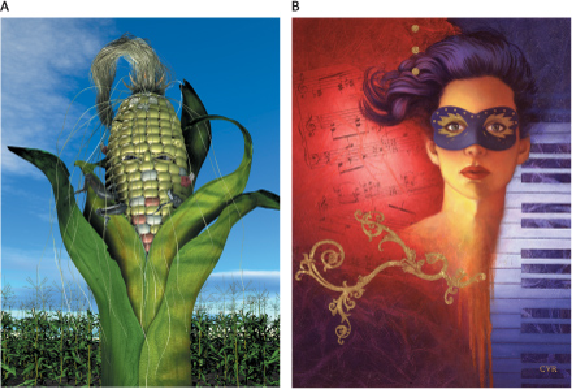Graphics Reference
In-Depth Information
THE QUESTION OF MEDIATION
and credibility comes to the fore in comparing these two illus-
trations. Both are fabrications—but which one seems more real? If you decided that the corncob
person does, you're probably not alone. Despite the impossibility of this subject matter, it has
been rendered in a photographic style that makes it seem more believable as “real” than the ab-
stract, invented space and painterly texture of the drawn image on the right.
A
Christopher Short
United States
B
Cyr Studio
United States
Semiology and Stylization
A designer might often need to represent ideas in a stylized
way, selecting the most important elements from a subject and arranging them in as con-
cise and simplified a message as possible. The most common occurrence of this kind
of image is a logo—an image that is used to identify an organization and differentiate
it from competing groups. The purpose of such a distilled, elemental form is quick re-
cognition and easy recall; the more information that can be packed into the shape of
the mark, the better. Stylizing an image emphasizes its nature as a “sign”—a visual rep-
resentation of an idea. The study of relationships between signs and what they rep-
resent or “signify” is called “semiology,” a branch of anthropology developed in the
1800s. In selecting the details of the idea or subject to be represented, the designer looks
for elements that are the most universally recognizable—for example, the fundament-
al shapes and qualities of a cat (ears, tail, a common posture, whiskers, paws, and so







